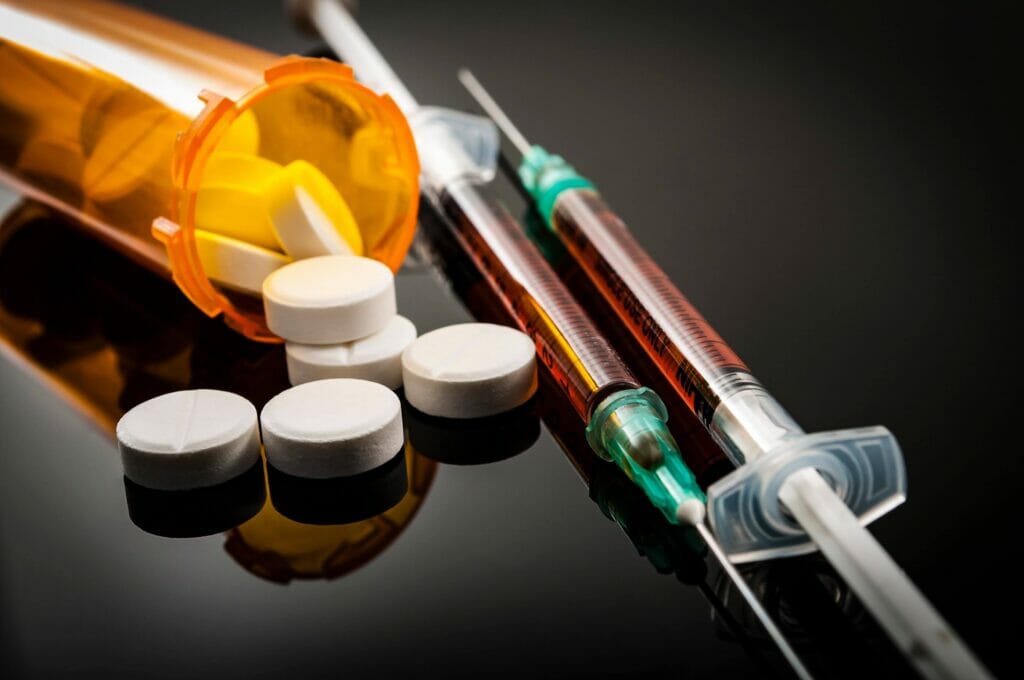From Painkillers to Heroin: The Connection

It’s no secret that the opioid epidemic in the United States has claimed countless lives and torn apart families and communities. The deadly epidemic has left many wondering how the situation started and what can be done to break the cycle of opioid addiction. Although the factors surrounding the opioid epidemic are complex, one factor shouldn’t be overlooked: the connection between prescription painkillers and heroin. Exploring the connection between painkillers and heroin can help combat and mitigate the opioid epidemic and save lives.
The Rise of Prescription Painkillers
In the late 1990s, pharmaceutical companies aggressively marketed opioids like OxyContin as a solution to treat chronic pain, assuring both doctors and patients that they were non-addictive. This misinformation led to a surge in opioid prescriptions, and many individuals were introduced to opioids through legitimate medical channels.
Patients prescribed these medications often found relief from their pain, but some began to develop a tolerance, which required them to consume higher doses to achieve the same effect. This escalation in dosage led to physical dependence and addiction. Unfortunately, when doctors became concerned about the risks of overprescribing opioids and started to limit prescriptions, many individuals dependent on prescription painkillers were left without a source of relief.
The Transition to Heroin
As prescription opioids became scarcer and more expensive on the black market, many individuals turned to a cheaper and more accessible alternative: heroin. Heroin, a potent and illegal opioid, provided a similar high to prescription painkillers at a fraction of the cost. This transition from prescription opioids to heroin marked a critical turning point in the opioid epidemic.
Oftentimes, the transition to heroin is often driven by desperation. Here’s how. When individuals can no longer afford or access prescription opioids, many seek heroin as a readily available substitute. Unfortunately, the stigma associated with heroin use and the fear of legal consequences often prevent people from seeking help until their addiction has spiraled out of control.
The Vicious Cycle of Addiction
Once individuals switch from prescription painkillers to heroin, they often find themselves caught in a vicious cycle of addiction. Why? Heroin is a highly addictive substance that can lead to physical and psychological dependence within a short period. That means users will do almost anything to avoid painful withdrawal symptoms, leading them to continue using the drug despite the obvious risks to their health and well-being. This makes the cycle of addiction challenging to break. The good news is there are several ways to address the connection between painkillers and heroin, which can help provide insight into the best ways to treat heroin addiction.
Addressing the Connection
The best way to address the connection between painkillers and heroin is a multifaceted approach that includes:
- Education. Raising awareness of the risks of prescription opioids and the potential for addiction is essential. Healthcare providers, patients, and the general public need accurate information about these medications.
- Prescription Guidelines. Implementing stricter guidelines for prescribing opioids can help prevent overuse and misuse. Healthcare professionals should be vigilant in monitoring patients for signs of addiction and providing alternative pain management options.
- Access to Treatment. Expanding access to addiction treatment services, including medication-assisted treatment (MAT), counseling, and support groups, is vital. People struggling with addiction need access to evidence-based care.
- Harm Reduction. Encouraging harm reduction strategies, such as naloxone distribution and supervised injection facilities, can save lives by preventing opioid overdoses.
- Reducing Stigma. Reducing the stigma surrounding addiction is crucial to encouraging individuals to seek help without fear of judgment or legal consequences.
- Changes to Law Enforcement and Regulation. Law enforcement should target illegal drug suppliers rather than punish individuals struggling with addiction. Additionally, stricter regulation of pharmaceutical companies and prescription practices is necessary to prevent the overprescription of opioids.
- Community Support. Building strong support networks within communities can help individuals in recovery stay on track and rebuild their lives.
Treating Heroin Addiction
The treatment of heroin addiction typically involves evidence-based approaches tailored to the individual’s needs and preferences. It’s essential to recognize that what works for one person may not work for another, so a personalized treatment plan is crucial. Here are some of the best evidence-based ways to treat heroin addiction:
Medication-assisted treatment (MAT), which includes:
- Methadone is a long-acting opioid agonist that helps reduce cravings and withdrawal symptoms. It is dispensed in a clinical setting.
- Buprenorphine (Suboxone) is a partial opioid agonist that qualified healthcare providers can prescribe. It helps reduce cravings and withdrawal symptoms while having a lower risk of overdose.
- Naltrexone is an opioid antagonist that blocks the effects of opioids. It can help prevent relapse but does not alleviate withdrawal symptoms. A long-acting injectable form (Vivitrol) is available.
Counseling and Behavioral Therapies
- Cognitive-behavioral therapy (CBT) helps individuals identify and change negative thought patterns and behaviors related to drug use.
- Contingency Management provides rewards or incentives for staying drug free and engaging in treatment.
- Motivational Interviewing (MI) is a client-centered approach that helps individuals explore their reasons for change and develop motivation to quit using drugs.
- 12-step Facilitation Therapy Based on the principles of Alcoholics Anonymous (AA) and Narcotics Anonymous (NA). This therapy encourages participation in self-help groups.
Comprehensive Assessment and Treatment Planning
- Addiction treatment should begin with thoroughly assessing the individual’s physical and mental health, social support, and addiction history. A personalized treatment plan is then developed to address their specific needs.
Integrated Care
- Treating co-occurring mental health disorders alongside addiction is crucial. Integrated treatment addresses both conditions simultaneously, improving overall outcomes.
Peer Support and Recovery Coaching
- Peer support programs, such as Alcoholics Anonymous (AA) and Narcotics Anonymous (NA), offer individuals a sense of community and understanding. Recovery coaches can provide guidance and support throughout the recovery process.
Family and Social Support
- Involving family members and loved ones in the treatment process can be beneficial. Family therapy and support groups can help address the impact of addiction on relationships and provide a support network.
Regular Monitoring and Drug Testing
- Random drug testing can help individuals stay accountable for their recovery and ensure compliance with treatment goals.
Relapse Prevention
- Developing coping strategies and relapse prevention skills are essential for maintaining long-term recovery. Treatment should focus on identifying and managing triggers for drug use.
Continued Care and Aftercare
- Recovery is an ongoing process. After formal treatment, individuals benefit from ongoing support, counseling, and access to resources to help maintain sobriety.
Treatment You Can Trust
The connection between painkillers and heroin is a tragic aspect of the opioid epidemic that continues to claim lives across the United States. Breaking this cycle of addiction requires a comprehensive approach that addresses the root causes, provides access to treatment, and reduces stigma. That’s what we offer here at Midwest Recovery Centers. Contact us today to learn more.




